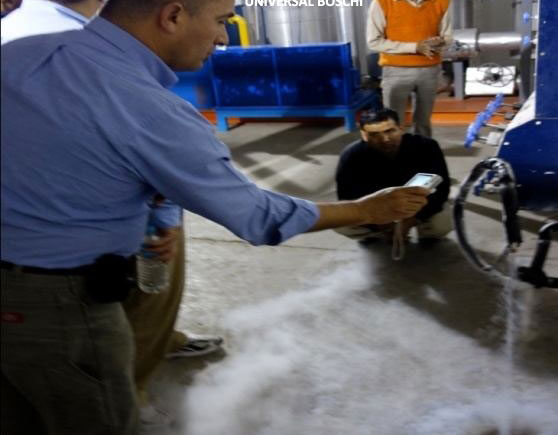
Oxygen is utterly vital for our sustenance on the planet earth. It comprises 21 per cent of earth’s atmosphere by volume. Oxygen is also found in the crust of the earth making up around 46.6 per cent. It is odorless, colorless and tasteless gas which is reactive and forms oxides with all elements except helium, neon, argon and krypton. It is necessary for human beings due to respiratory and combustion processes.
The non-reactive gas is generated commercially for application in industries and medicine. For generation of liquid oxygen we use cryogenic distillation process for liquefaction & separation of oxygen from air. Liquid oxygen is used in numerous applications such as melting, refining and making of steel & other metals, providing medical & biological support, mining, production, and making of stone & glass product, etc.
Oxygen is generated by liquefaction of atmospheric air in the air separation unit (ASU). Cryogenic technique is the most commonly used for producing liquid oxygen for industrial and medical applications. There are non-cryogenic methods as well such as pressure swing method which are used for producing oxygen with purity of 90-93% but is not used for large scale production of oxygen with high purity.
Cryogenic method takes atmospheric air which is then fed into the compressor. After being compressed the air is sent into a cleanup system where it is cleaned up of all impurities such as moisture, carbon dioxide and hydrocarbons.
For getting liquefaction of the air, it is passed through heat exchangers where it is cooled into a cryogenic liquid, defined as liquefied gases that have boiling point below -90 degrees Celsius. Afterwards, the air is directed into high pressure distillation column where oxygen is separated from other gases such as nitrogen, argon, etc.
Oxygen is formed at the bottom of the distillation column. Here oxygen is distilled till it meets the commercial specifications of purity. Then, liquid oxygen is stored in cryogenic storage tanks. Liquid storage is preferred to gaseous storage is economical as well as effective because there are no leakages. By the way, 1 liter of liquefied oxygen equals 840 liters of gaseous oxygen.
However, liquid storage tanks must be made using high strength materials so that they could withstand extreme temperatures and pressure. High quality materials are used that meet the standards of American Society of Mechanical Engineers (ASME) code.
Liquid oxygen must be shielded from the surrounding heat which requires use of specialized materials. Oxygen gas plants come with vaporizing pumps that can convert liquid oxygen into gaseous oxygen.

